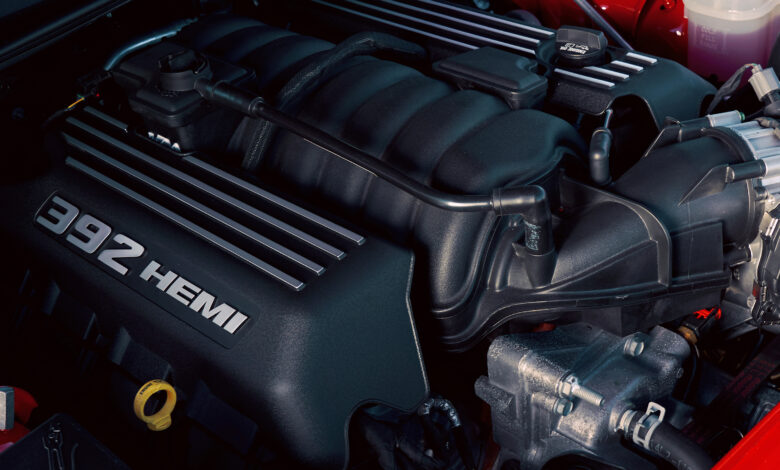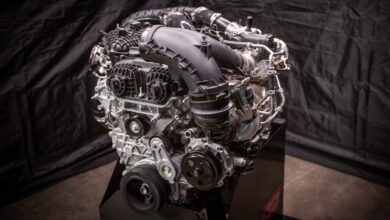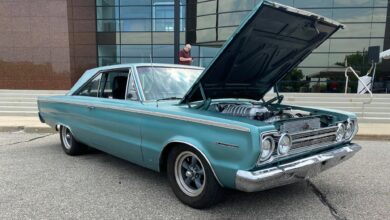Should Stellantis Build a Smaller HEMI® V8?
Exploring a Modern HEMI® V8’s Potential in Stellantis' Lineup Amidst Shifting Industry Trends...

The push for electrification has transformed the automotive industry, yet internal combustion engines (ICEs) remain a cornerstone of vehicle sales. Companies like Ford and General Motors (GM) continue to refine their V8 engines, demonstrating that innovation in ICEs still has a role in the modern market.
Ford’s COYOTE V8 is a shining example of this balance between tradition and efficiency. Could Stellantis follow suit by creating a smaller displacement HEMI® V8 to complement its lineup?
What Makes Ford’s COYOTE Engine a Benchmark?

Ford’s 5.0-liter (302 cubic-inch) COYOTE V8 is a favorite among performance enthusiasts. Found in the Ford Mustang and F-150, the engine has carved a reputation for its versatility and power. Featuring dual overhead cams (DOHC), variable valve timing, and high compression ratios, the COYOTE engine delivers impressive performance, excellent fuel efficiency, and compliance with emissions standards.
Moreover, the COYOTE has become a favorite in the aftermarket, with companies like Roush offering supercharger kits that push output to over 800 horsepower. This adaptability has solidified its appeal, blending modern engineering with raw power.
If Stellantis developed a smaller displacement HEMI V8—perhaps a 5.2-liter (318 cubic-inch) variant—it could directly compete with the COYOTE engine in both power and efficiency. By adopting technologies like DOHC architecture, direct injection, and lightweight construction, Stellantis could create an engine that combines the iconic HEMI performance with a cleaner, more efficient profile.
The Role of Politics in ICE Development

The regulatory environment plays a significant role in shaping automakers’ strategies. President Joe Biden’s administration introduced stringent emissions standards aimed at pushing automakers toward electric vehicle (EV) production. These rules encourage automakers to transition at least 35% of production to EVs by 2032.
However, with Donald Trump preparing to return to the presidency in 2025, his administration has signaled plans to roll back these regulations. This could create a window of opportunity for Stellantis to invest in ICE development, including a new HEMI® V8. Trump’s previous administration similarly eased Obama-era efficiency standards, and industry insiders expect a similar approach this time.
The timeline, however, poses challenges. Developing a next-generation engine could take years, potentially aligning with the end of Trump’s presidency. Stellantis must weigh the long-term benefits of ICE investment against the uncertainty of shifting political landscapes.
Why Stellantis Needs a Smaller HEMI® V8

Preserving Brand Identity –
Mopar enthusiasts are deeply loyal to Stellantis brands like Chrysler, Dodge, Jeep®, and Ram, largely due to the legacy of the HEMI V8. These engines are more than powertrains; they represent a heritage of performance, power, and muscle. Offering a modern HEMI V8 would honor this legacy while evolving to meet current demands.
Competing with Rivals –
Ford’s COYOTE V8 and GM’s small-block V8 updates demonstrate that ICE innovation is alive and well. GM’s upcoming small-block V8 promises better efficiency, reduced emissions, and even greater performance, setting a high bar for Stellantis to match.
Meeting Customer Demand –
While EV adoption is growing, trucks, SUVs, and muscle cars remain strong sellers in the U.S. A smaller displacement HEMI V8 could power a range of Stellantis vehicles, from Dodge Chargers, to Jeep SUVs, to Ram 1500 pickups, offering buyers the performance they desire while improving efficiency and emissions.
Potential Challenges

Time and Cost –
Developing a next-gen HEMI V8 would require significant investment in research, development, and production tooling. The engine would also need to meet evolving emissions standards worldwide, requiring advanced engineering.
Balancing ICE and EV Investment –
Stellantis has heavily invested in its EV future, with models like the Dodge Charger Daytona and Jeep Recon leading its electrification strategy. Allocating resources to ICE development could risk diverting attention from EV goals, complicating the company’s long-term strategy.
Stellantis faces a unique opportunity to modernize its iconic HEMI V8 engine. A smaller displacement HEMI could rival Ford’s COYOTE engine, delivering the performance Mopar fans expect while aligning with stricter regulations.
With potential regulatory rollbacks under a Trump administration, Stellantis could find itself in a more favorable environment for ICE development. By blending tradition with innovation, the company could solidify its legacy while meeting the demands of an evolving market.
Tell us what you think, in the comments below.






48 replies
Loading new replies...
Join the full discussion at the Mopar Insiders Forum →